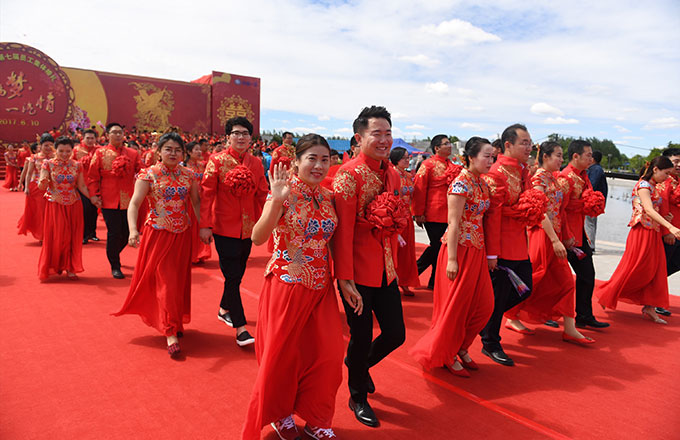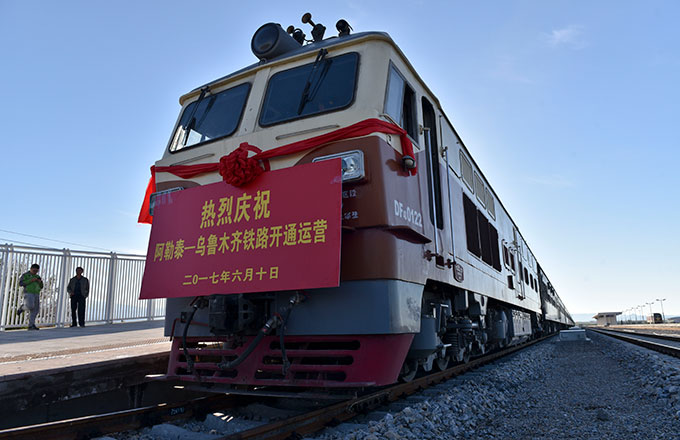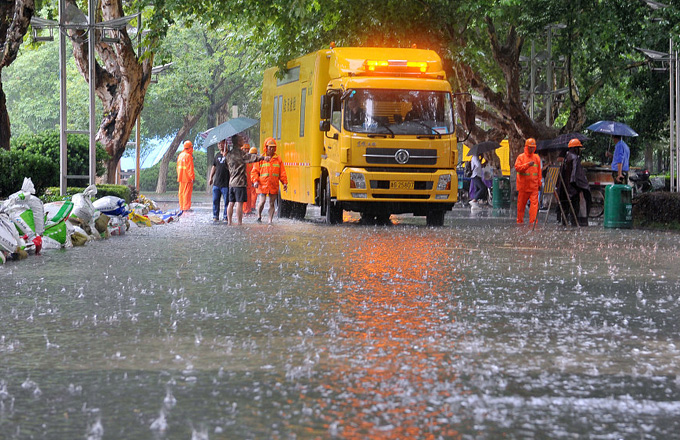Outline plan for the Nanjing-Shanghai-Hangzhou campaign96
March 31, 1949
1. Chiang Kai-shek's forces, assembled between Shanghai and Anqing, consist of 24 corps, or 72 divisions, totaling about 440,000 men. Among them 18 corps, or 49 divisions, are defending the Yangtze River; six corps, or 23 divisions, are controlling the areas along the Zhejiang-Jiangxi sector, including Hangzhou, Jinhua, Quzhou and Huizhou; four of five corps are for emergency use.
2. In order to wipe out all or most of these forces, occupy southern Jiangsu, southern Anhui and the whole of Zhejiang Province, seize Nanjing, Shanghai and Hangzhou, so as to completely destroy the political and economic center of the reactionary Kuomintang government, we have decided that our Second and Third Field Armies begin to cross the Yangtze River and launch the Nanjing-Shanghai-Hangzhou Campaign at 18:00 hours on April 15.
3. When our troops have succeeded in crossing the river, the enemy may attempt the following moves:
1) Draw back his troops to the Nanjing-Shanghai-Hangzhou triangle and the Nanjing and Wuhu areas to control his strategic points of Nanjing, Shanghai, Hangzhou, Wuhu, Zhenjiang and Wuxi; take advantage of the long distance between our two armies, one in the west and the other in the east, to concentrate his forces to fight a decisive battle when our troops in the east have rushed to the east section of the Nanjing-Shanghai Railway, and withdraw his forces operating west of Wuhu to an area along the Zhejiang-Jiangxi Railway, so as to guarantee his retreat.
2) Retreat and set up defenses in Wuxi, Nanjing, Wuhu and in areas further down south; swiftly transport his troops by means of the Zhejiang-Jiangxi Railway in order to control areas along the railway; defeat the two strategic points of Nanjing and Wuhu and, at the same time, cut off connections between our armies in the west and the east and, depending on the circumstances, wage a decisive battle against us in the Nanjing-Shanghai-Hangzhou triangle, or withdraw to areas along the Zhejiang-Jiangxi Railway to fight a decisive battle there, or beat a strategic retreat along the railway.
3) Abandon the areas of Wujin, Zhenjiang, Nanjing and Wuhu and withdraw all his forces down south along the Yangtze River to the Zhejiang-Jiangxi Railway and to the coastal areas along Wuxi, Shanghai and Hangzhou, so as to put up stubborn resistance or to make an orderly retreat, taking advantages of the railway and ports.
4) Desperately defend Nanjing, Shanghai and Hangzhou if circumstances do not favor a retreat.
5) Once our troops succeed in crossing the Yangtze, the course of the war will turn in our favor no matter what tactics the enemy employs, and he will probably be thrown into utter confusion.
4. Our army's battle plan is as follows:
1) Cross the Yangtze during the first stage of the campaign and, depending on the requirements of the next stage, deploy troops for the coming campaign; during the second stage, divide and encircle the enemy and bring a section of the Zhejiang-Jiangxi Railway under our absolute control in order to cut off the enemy's retreat and, during the third stage, wipe out the encircled enemy forces one by one to bring the campaign to a close.
2) In preparing for the campaign, we must keep in mind the first two moves the enemy may attempt, as described under 3, so that when our troops in the east encounter fierce fighting after have crossed the Yangtze, the troops in the west can give timely and effective support.
3) No matter which move the enemy makes and no matter what else happens, the main forces of the Seventh and Ninth Armies of the Third Field Army in the west, except for those troops required to co-operate with the Second Field Army in wiping out the enemy they confront, should march eastward quickly to join forces with the Eighth and Tenth Armies of the Third Field Army in the east that should march westward at the same time. If this is done, not only will the main forces of the armies in the east be assured of victory instead of being isolated, but we shall also be able to disrupt the enemy's operational system and divide and encircle enemy troops. Hence, this move is truly the key to the success of the whole campaign.
4) If the enemy adopts the first move, the main force, or even the entire force, of the four armies of the Third Field Army should be concentrated on the Nanjing-Shanghai Railway for a decisive battle, and an army of the Second Field Army should advance to Quzhou and areas to its north and west to cut off the Zhejiang-Jiangxi Railway, while its main force should move eastward along the Yangtze River to capture Wuhu and prepare for the capture of Nanjing. If the enemy employs the second move, our troops should do the same as above, except that the main force of the Second Field Army should advance to the Zhejiang-Jiangxi Railway.
5) If the enemy employs the third move, part of the Second Field Army should garrison Nanjing while the main force should wipe out the enemy troops along the Zhejiang-Jiangxi Railway, and the entire force of the Third Field Army should then annihilate the enemy in the areas of Shanghai, Hangzhou and Wuxi.
6) If the enemy uses the fourth move, the Second Field Army should capture Nanjing, and the Third Field Army should seize Shanghai and Hangzhou. It would be better to take Shanghai after Nanjing and Hangzhou.
7) If the enemy troops are thrown into utter confusion, we shall act in light of the circumstances.
5. Deployment for the first stage of the campaign--crossing the Yangtze River:
1) Comrades Su Yu and Zhang Zhen will be in command of the headquarters of the Third Field Army and directly lead the main force of the Eighth and Tenth Armies of the Third Field Army, which comprises six corps and three independent brigades, in crossing the Yangtze River from the section between Zhanghuang Port and Longshao Port and from the Kuo'an-Sanjiangying-Jingkou section respectively, and when the campaign begins, the 34th and 35th corps of the Eighth Army will make a feint to draw enemy fire and tie down the enemy troops operating in Pukou and Puzhen. After crossing the river, some troops from the two corps will remain there to wipe out enemy troops they confront along the river, while the main force should march rapidly towards the Nanjing-Shanghai Railway and seize a section of it. They should establish a firm foothold before redeploying themselves, strengthening their positions and consolidating their rear communications lines to extend their victory by attacking the enemy systematically and with a rear area to fall back on. If conditions permit, troops should be dispatched to march westward and cut off the Nanjing-Hangzhou Highway. If attacked, they should try to wipe out the enemy group by group through field operations. If outnumbered, they should continue strengthening their positions until the Seventh and Ninth Armies arrive and join them to wipe out the enemy.
2) Comrade Tan Zhenlin will lead the Seventh and Ninth Armies of the Third Field Army across the Yangtze River from the section between Yuxikou and Yaogou and the section from Yaogou up to, but not including, Zongyang Town. After crossing the river, sufficient troops should remain to wipe out the enemy troops they confront along the river and keep watch on the enemy in Wuhu, while the main force should march swiftly eastward to join forces with the Eighth and Tenth Armies, cut off the Nanjing-Hangzhou Highway so as to cut up the enemy troops in the Nanjing-Shanghai-Hangzhou area and, with the Eighth and Tenth Armies, wipe out those troops piecemeal.
The two routes mentioned above (involving four armies) are to be under the command of Su Yu and Zhang Zhen. The specific battle plan for these two routes and the route along which the Seventh and Ninth Armies are to march eastward is to be worked out by the commanders of the Third Field Army.
3) The Second Field Army is to cross the Yangtze from the section starting at Zongyang Town and extending to Wangjiang. Besides wiping out any enemy troops it might confront, one army is to press onward as swiftly as possible to Quzhou and areas to its north and west and bring a section of the Zhejiang-Jiangxi Railway and the highways south and north of Tunxi under complete control, in order to cut off the enemy's retreat. The main force of the Second Field Army should march quickly eastward to take over the tasks unfulfilled by the troops left behind by the Third Field Army, wipe out the enemy troops in the Wuhu area, and prepare to attack and seize Nanjing. The specific operational plan for the units of the Second Field Army is to be worked out by its commanders.
4) After crossing the Yangtze, all army units should send men to assist neighboring units in crossing the river, maintaining close communication with these units, exchanging information and co-operating closely with them, and actively support them in fighting.
6. The General Front Committee will use transceivers belonging to the East China Bureau to keep in contact with the two field armies and the four armies of the Third Field Army. All telegrams concerning the campaign sent by the armies of the Third Field Army to Su Yu and Zhang Zhen should be sent simultaneously to the General Front Committee.
7. Matters relating to tactics, techniques, communications and logistics of the campaign are to be decided by the two field armies themselves.
8. This is an outline plan for the campaign. The General Front Committee will, whenever necessary, issue separate orders with regard to the arrangements to be carried out and the measures to be taken as the campaign develops.
(Drafted for the General Front Committee, this outline plan was submitted to the Military Commission of the CPC Central Committee on April 1, 1949 and was approved by the commission on April 3.)
(From Selected Works of Deng Xiaoping, Volume I <1938-1965>)
- China issues guidelines to develop 'all-for-one' tourism demonstration zones
- Torrential rain triggers disaster in Southwest China
- Harvest time for wheat reapers in Shanxi
- Over 200 couples marry in Changchun group wedding
- Calligraphy tops other icons of Chinese culture, WeChat data shows



















